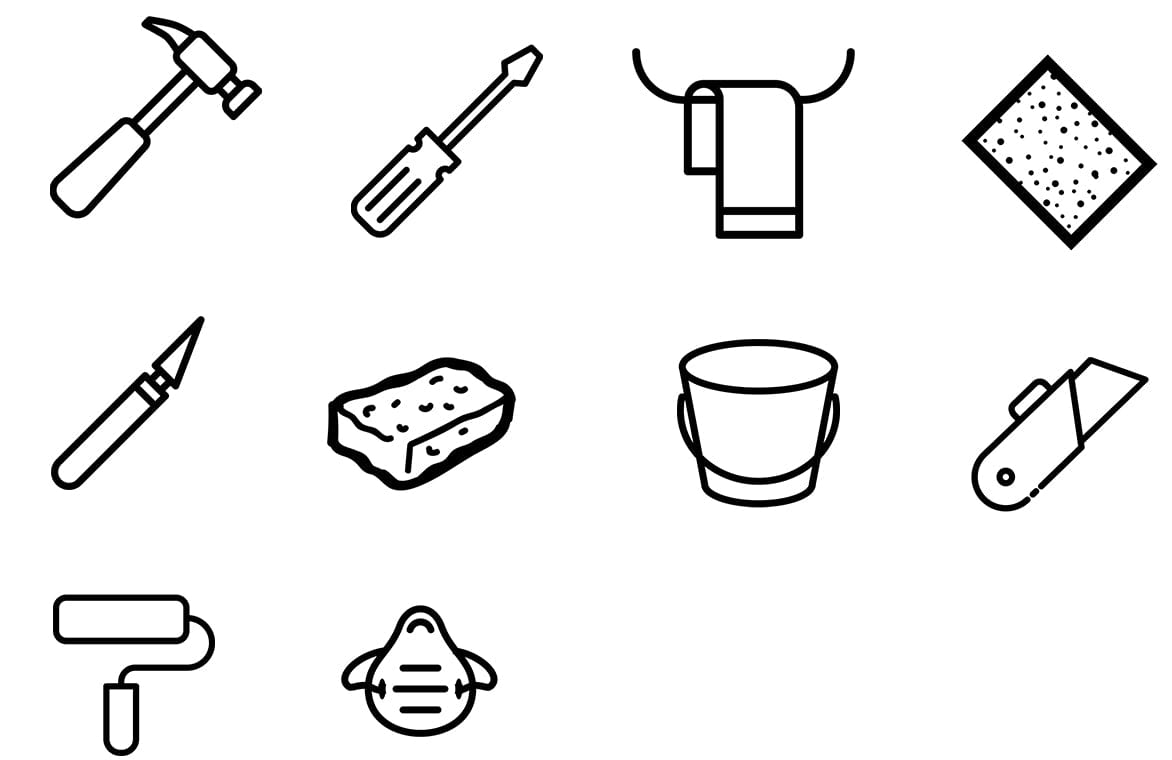How to Prepare Your Wall Before Installation
Here we’ve shared some useful tips to help you prepare the perfect wall.
Recommended Tools
- √Work light
- √Dust sheet
- √Hammer
- √Screwdriver
- √Towel
- √Sandpaper
- √Triangle scraper
- √Sponge and water bucket
- √Blade knife
- √Paint and roller
- √Dust mask

Step by Step:
1. Cover the floor with cardboard or plastic dust sheets.
2. Remove any nails and screws.
3. Switch off the main power for the room and remove any socket/switch covers.
4. Fill any holes or rough areas.
5. Sand and smooth the surface.
6. Use a sponge to clean the walls with warm water and mild soap and allow the walls to dry for at least 24 hours.
7. Paint the wall in a light uniform color before wallpapering if you have significant color differences between your wall and wallpaper.
For different wall types/textures, please follow these tips on how to treat them differently before installation:
PAINTED SURFACE
Wash with dish soap and water, or similar, and rinse with water. Remove any loose paint. If there are large holes, fill them and let dry before sanding the surface until it is smooth.
CONCRETE AND PLASTERED SURFACES
Spackle any holes or rough areas and joints then plaster the whole wall. When the spackle is dry, sand, smooth and seal the wall with primer to ensure a successful result. You will need to paste the wall with glue and let it dry before you start wallpapering.
PLASTERBOARD, CHIPBOARD AND WOOD FIBER BOARDS
Spackle any nail and screw holes. The joints should be filled with spackle and jointing tape. Sand and smooth out and seal the wall with primer/sealer. Chipboards should be painted with alkyd primer/sealer before wallpapering, to ensure that the joints don't move.
PREVIOUSLY WALLPAPERED SURFACE
All loose wallpaper should be removed. Some wallpapers are peelable or removable, which means that the first layer can be removed. If the first layer isn’t peelable, you need to plaster the whole wall and sand.
PAINTED FIBERGLASS FABRIC
Wash the surface with dish soap and water or similar and rinse with water. Plaster the whole wall and let the spackle dry before sanding, smoothing and sealing the wall with primer/sealer.
TEXTILE/FABRIC WALLPAPER LIKE SEAWEED/GRASSCLOTH OR SIMILAR
Remove all material from the wall. If it is too hard, use a wallpaper stripper. Spackle and seal the wall with primer/sealer.





